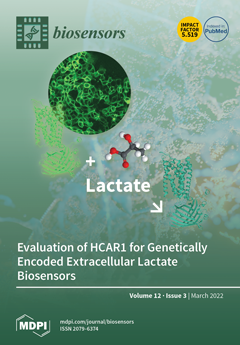Open AccessCommunication
A Wearable Breath Sensor Based on Fiber-Tip Microcantilever
by
Cong Zhao, Dan Liu, Zhihao Cai, Bin Du, Mengqiang Zou, Shuo Tang, Bozhe Li, Cong Xiong, Peng Ji, Lichao Zhang, Yuan Gong, Gaixia Xu, Changrui Liao and Yiping Wang
Cited by 14 | Viewed by 3849
Abstract
Respiration rate is an essential vital sign that requires monitoring under various conditions, including in strong electromagnetic environments such as in magnetic resonance imaging systems. To provide an electromagnetically-immune breath-sensing system, we propose an all-fiber-optic wearable breath sensor based on a fiber-tip microcantilever.
[...] Read more.
Respiration rate is an essential vital sign that requires monitoring under various conditions, including in strong electromagnetic environments such as in magnetic resonance imaging systems. To provide an electromagnetically-immune breath-sensing system, we propose an all-fiber-optic wearable breath sensor based on a fiber-tip microcantilever. The microcantilever was fabricated on a fiber-tip by two-photon polymerization microfabrication based on femtosecond laser, so that a micro Fabry–Pérot (FP) interferometer was formed between the microcantilever and the end-face of the fiber. The cavity length of the micro FP interferometer was reduced as a result of the bending of the microcantilever induced by breath airflow. The signal of breath rate was rebuilt by detecting power variations of the FP interferometer reflected light and applying dynamic thresholds. The breath sensor achieved a high sensitivity of 0.8 nm/(m/s) by detecting the reflection spectrum upon applied flow velocities from 0.53 to 5.31 m/s. This sensor was also shown to have excellent thermal stability as its cross-sensitivity of airflow with respect to the temperature response was only 0.095 (m/s)/°C. When mounted inside a wearable surgical mask, the sensor demonstrated the capability to detect various breath patterns, including normal, fast, random, and deep breaths. We anticipate the proposed wearable breath sensor could be a useful and reliable tool for respiration rate monitoring.
Full article
►▼
Show Figures






